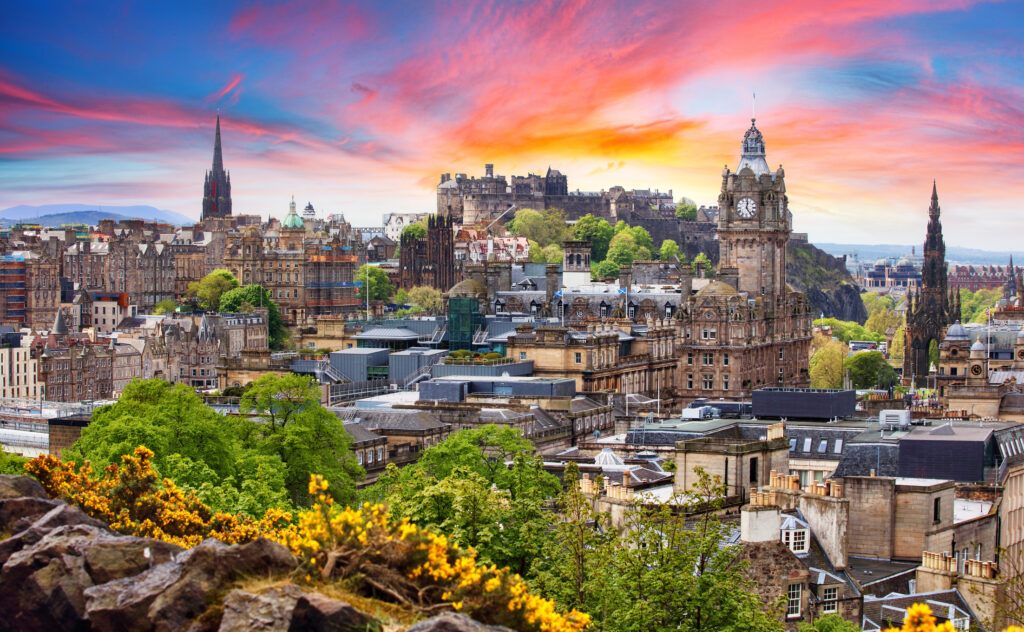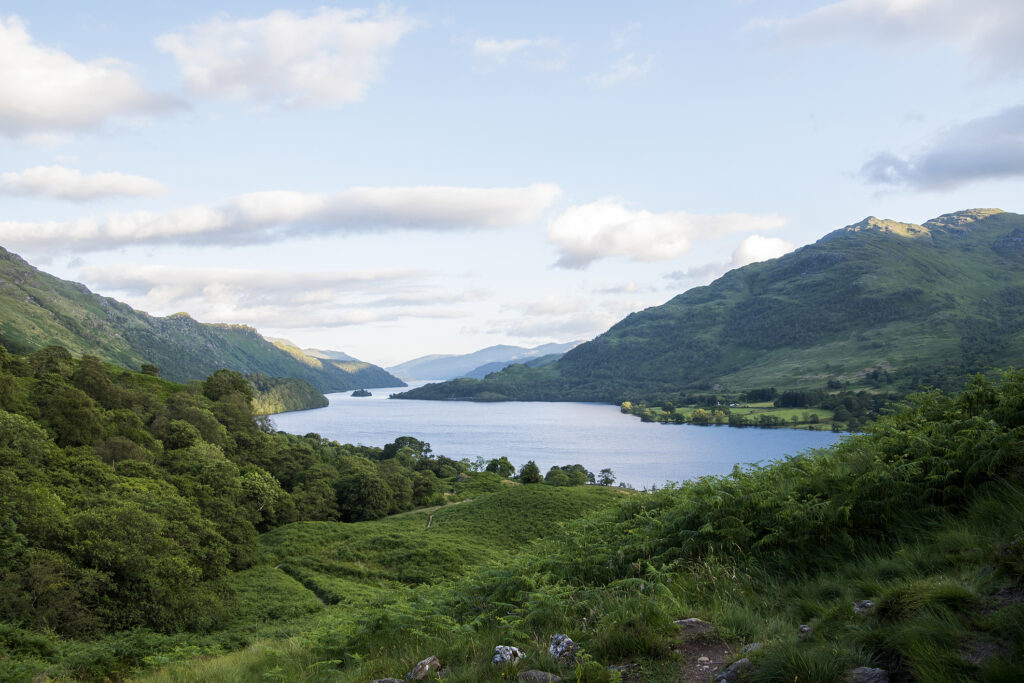Scotland is one of the most historic countries in Europe, with settlements like Cramond dating back to around 8500 BC! It’s no wonder, then, that there are plenty of interesting facts about the country that sits proudly atop the British Isles.
From its dramatic history to the vibrant culture that’s still thriving today to the remarkable wildlife that can only be found in Scotland, there’s plenty to learn from such a small place, with lots of mystery still surrounding the wilderness that is the Highlands.
Let’s take an adventure through Scotland and discover what keeps people coming back year after year.
10 interesting facts about Scotland
1. Edinburgh is Scotland’s capital city
Cramond is cited as Scotland’s oldest settlement, located near Edinburgh. The long history of the settlement has probably contributed to Edinburgh being the historic city that it is today.
There’s more than enough history in Edinburgh, but there’s also a lot going on in the present. From the Fringe Festival to sightseeing in the historic city, there’s plenty to keep you busy during a weekend away or the school holidays.

2. Scotland has many cultural traditions
Scotland is bursting with its own unique cultural traditions that go way beyond bagpipes and kilts. The country has been influenced heavily by Celtic, Norse, and Brythonic (the language thought to have been spoken during the Iron Age in Scotland) traditions, which can still be seen today.
Take Halloween, for example, in Scotland, guising is favoured over trick or treating. Guising requires you to sing a song or tell a joke, or put on some form of performance to really earn your treat. And you can forget pumpkins, in Scotland, it’s all about tumshie turnip carving!
Linking to the mythical past of Scotland, there are still people who keep these traditions alive by tying clootie ribbons to garner favour from fairies on their loved one’s birthdays or if they are unwell.
3. The Scots have 3 official languages
The Scottish Government recognises three languages as official languages of Scotland: English, Scots, and Scottish Gaelic. English is still the most widely spoken language in Scotland, but its rich linguistic heritage is thriving with more and more Scots learning their country’s historic languages. There are plenty of examples of Gaelic influencing the words we still use today.
The Gaelic word for Whiskey, “Usquebaugh,” meaning “water of life,” became shortened and anglicised (adapted to English) over time to give us the word that is used worldwide.
4. St Andrew’s Day is Scotland’s national day
The story of St Andrew is a fascinating one. Although St Andrew never lived in Scotland, it’s believed that his remains were brought to Scotland after he died.
There are various stories linking St Andrew to Scotland, such as an apparition of his cross in the sky before a battle, signifying an upcoming victory for the Scots. He became the patron saint of Scotland in 1320. The story goes that the symbol appeared in the sky near Athelstaneford Village, which is why it’s known as the birthplace of Scotland’s flag, which features St Andrew’s Cross. Today, there is a Flag Heritage Centre in Athelstaneford Village where visitors can see a visual dramatisation of the battle available in 7 languages.
Celebrated on 30 November every year, St Andrew’s Day honours Scotland’s patron saint with festivals, food, and pride across the nation.
5. Unicorn, Golden Eagle and Thistle are Scottish national treasures
Scotland has three widely recognised national symbols. The unicorn (a mythical horse with a horn atop its head) is the country’s national animal.
The golden eagle, while not an official symbol, is a staple of Scotland’s landscape and a culturally significant animal to the Scottish people, representing purity, strength, and freedom.
The prickly thistle is Scotland’s national flower, growing proudly across Scotland’s countryside.

6. There are over 30,000 lochs in Scotland
You’ve probably heard of Loch Ness from the famous Loch Ness Monster, but there are over 30,000 other lakes that decorate Scotland. Loch Ness is also famous because it holds approximately 263 billion cubic feet of water, an astonishing amount!
The deepest loch is Loch Morar, reaching depths of 310 metres. The largest loch by surface area is Loch Lomond, which covers 71km².
7. Scotland has a varied and partly undiscovered wildlife
Scotland’s countryside is home to animals that you won’t see anywhere else in the UK – from mountain hares and pine martens to Scottish wildcats and red deer. The isolated nature of the Highlands means that humans haven’t disturbed large swathes of the environment, which means there could be even more undiscovered species living here.
The waters around Scotland are quite chilly, as you can imagine, but that doesn’t mean there aren’t plenty of incredible animals that call it home. Believe it or not, sharks, whales, and seals are common sights in Scottish waters, but you can also spot sharks in Deep Sea World if you’d like to see them up close. These marine creatures have adapted to live in the cooler temperatures of the North Sea.
8. The Forth Rail Bridge is an iconic Scottish landmark
The Forth Rail Bridge has stretched over the Firth of Forth for more than a century. It’s a UNESCO World Heritage Site because it was the first major steel structure of its kind, and it is now an iconic view over the River Forth.
9. There are many Scottish myths and legends…
Like other parts of the British Isles, Scotland is steeped in myths and legends. Stories are still told today that have been passed down through generations. We’ve already touched on the Loch Ness Monster, easily Scotland’s most famous myth, but there are also plenty of stories about other creatures, like the ceasg, a half-woman, half-salmon creature that is said to swim through Scotland’s lochs and rivers. And who could forget selkies (people who are half seal, half human), originating from Orkney Orcadian Folklore.
10. The longest underwater walkway in Europe is at Deep Sea World, Scotland
If you’d prefer to keep yourself on land while you explore Scotland, you can experience the wonders of the sea while staying completely dry.
Deep Sea World, Scotland, is home to the longest underwater walkway in Europe. The walkway allows guests to experience what life would be like underwater, coming closer than ever to the fish while staying warm and dry.
Scotland continues to dazzle tourists with its layered history, cultural vibrancy, and wild landscapes, all packed into lochs, legends, kilts, and stunning coastlines.
Excited to jump in? Get your tickets booked for Deep Sea World, ready for your next trip to Scotland.
